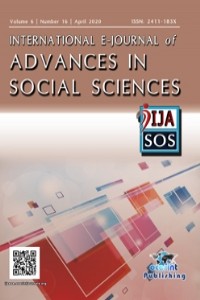Abstract
References
- Kolobaev V.К., Vorobyeva К.V. (2019). Clip thinking and teaching foreign languages in non-linguistic higher education institutions: psychological and pedagogical aspects. International research journal. Vol. 9(87) https://doi.org/10.23670/IRJ.2019.87.9.027
- Turkle S. (2011) Alone Together: Why we expect more from technology and less from each other.
Abstract
Purpose: The aim of the paper is to discuss the phenomenon of students’ clip thinking, its roots and ways of handling the problem in a higher education establishment. The research reflects concerns of domestic and foreign scholars and educational professionals about the students having the mosaic worldview devoid of logical reasoning rather than the integral picture of the world.
Methodology: The methodological basis of the study is the data of the general and special scientific methodology. Dialectics has determined the reasoning. The philosophical principle of the universal connection of objects and phenomena of objective reality, the principle of determinism and systematicity are taken as a basis as well.
Result: The research has sparked the students’ interest in the problem of clip thinking under study, the reasons for its occurrence, and ways to handle it. Although most students have a clear idea of the term “clip thinking”, and, therefore, succeed in analysing the reasons for its development, few of them are able to practise what they intuitively (and correctly) regard as appropriate. As seen from the research, all the students involved in the experiment need a closer communication with the university professors and a greater engagement in the academic and extra-curricular activities in order to develop integral thinking, imagination, memory, oratorical skills and many others essential for future professionals.
Application: The research can be useful to university and school professionals, scholars and students.
Keywords
clip thinking students, integral worldview, university, mosaic thinking, education professional
References
- Kolobaev V.К., Vorobyeva К.V. (2019). Clip thinking and teaching foreign languages in non-linguistic higher education institutions: psychological and pedagogical aspects. International research journal. Vol. 9(87) https://doi.org/10.23670/IRJ.2019.87.9.027
- Turkle S. (2011) Alone Together: Why we expect more from technology and less from each other.
Details
| Primary Language | English |
|---|---|
| Journal Section | Articles |
| Authors | |
| Publication Date | September 10, 2020 |
| Submission Date | March 3, 2020 |
| Published in Issue | Year 2020Volume: 6 Issue: 16 |
Contact: ijasosjournal@hotmail.com
The IJASOS Journal's site and its metadata are licensed under CC BY
Published and Sponsored by OCERINT International © 2015- 2025


